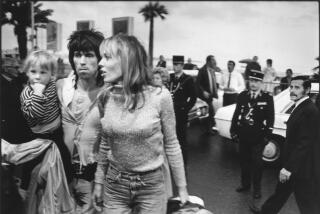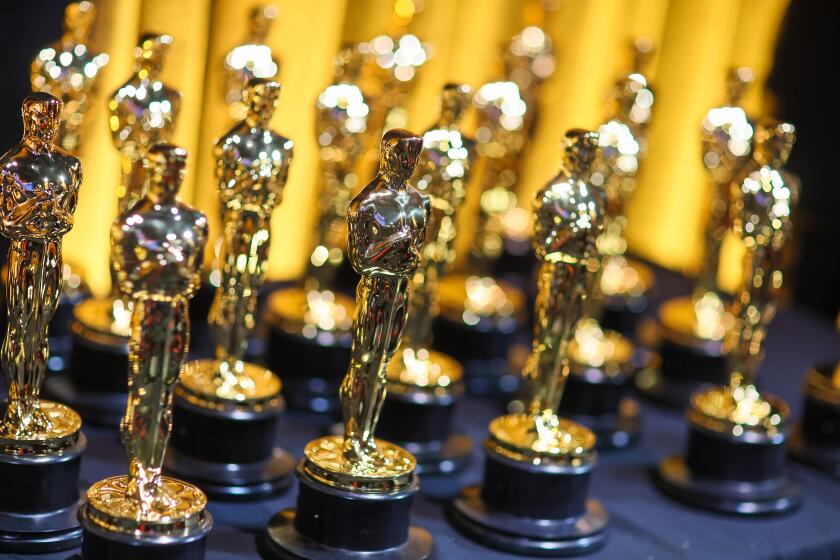Charging into Afghanistan
Three gloomy ravens perched atop the OK Corral should suffice as an omen that the cinematic Westerner is galloping back. Now on the wide screen is an epic remake of “The Alamo,” last seen with John Wayne; Walt Disney’s animators have saddled up with “Home on the Range”; and HBO is twinning “The Sopranos” with “Deadwood,” featuring a Calamity Jane who talks like a rapper. This is not so surprising. Ours is a martial moment, the president is a Texan, and our guns are at the ready to protect our homeland.
Still, it occurs to me that the gatekeepers of our popular culture, with honorable exceptions, once again display a poverty of historical imagination. As never before, Afghanistan, with its denizens and neighbors, pervades cable and prime-time television news as Iraq intensifies America’s rendezvous with Islam. Yet one cannot recall a single movie or made-for-television drama, much less a documentary, featuring the select and astonishing caravan of Yanks who long ago, in the 19th century, headed east to forage among emirs, mullahs and warlords in quest of glory and riches, propelled as well by a stubborn American passion to reform foreign lands.
Heading the pack was Josiah Harlan (1799-1871), described in the venerable Concise Dictionary of American Biography as a “physician, soldier, adventurer [who] recounted his exploits as secret agent and Afghan general in ‘A Memoir of India and Afghanistan’ (1842).” Harlan was all that and more -- the first American to trespass in the Hindu Kush, becoming a regal friend or foe of nearly every key figure in the First Afghan War. This was the first big move in the Great Game, a phrase popularized by Rudyard Kipling to describe the century-long duel between Russia and Britain for mastery of Asia. Now, finally, we have a solid biography of Harlan by Ben Macintyre, a veteran correspondent for the Times of London, itself once the house organ of the Victorian Empire.
Macintyre’s title derives from a credible surmise, namely that the immortal Kipling short story “The Man Who Would Be King” was inspired by Harlan’s feats. Kipling was a budding journalist in India when he conjured his imaginary meeting with two freebooting ex-soldiers, Daniel Dravot and Peachy Carnehan. They were en route to Afghanistan disguised as natives and packing 20 high-power Martini rifles. Both were Freemasons, which formed their bond with Kipling in the story. Dravot’s plan was to emulate Alexander the Great by crowning himself king somewhere in the wild region known as Kafiristan. He attained his throne, only to perish when he outraged his subjects by seeking a tribal bride, the point being that Martini rifles could not save an alien king who blatantly violated local customs.
Kipling’s tale anticipated the deeds of later British kingmakers, most conspicuously Lawrence of Arabia. It inspired as well the evocative and timely film directed by John Huston and shot in Morocco in 1975, in which Sean Connery portrayed Dravot and Michael Caine his surviving comrade, with Christopher Plummer as Kipling. And it seems to me highly plausible that young Kipling, who scoured the Raj’s army for fictional fodder, heard of this American soldier of fortune and gifted impostor. Josiah Harlan too was a Master Mason. His path into outermost Afghanistan was well posted, and he gathered such titles as Prince of Ghor, the Paramount Chief of the Hazara (guardians of the Taliban-destroyed Giant Buddhas at Bamian), as well as becoming lord of Kurram and governor of Jasrota and Gujrat. He was also chief of the Mighty Khans as well as the Holy Sahib Zader. Most potently, he also became Chief Sirdar of the invincible armies of Dost Mohammed Khan, the Emir of Kabul and Pearl of the Ages. Finally, tucked always in Harlan’s rucksack was the classic life of his guide and part role model, “The History of Alexander the Great” by Quintus Curtius Rufus.
Yet oddly, this Yankee warlord was born of devout Quaker parents in Newlin Township, Pa. As a soldier in India, Harlan departed outwardly from his Quaker beliefs but his religion remained, in Macintyre’s words, central to his character, “revealing itself in a hardy independence of thought, belief in sexual equality, deep-rooted opposition to slavery, and a marked disinclination to bow and scrape to those who considered themselves his superiors.” In this respect, he led the way for other Americans who followed in his steps, among them the Tibetan traveler William Woodville Rockhill, the Siberian and Caucasus explorer George Kennan (great-uncle of the diplomat) and W. Morgan Shuster, friend and defender of Persia’s constitutional reformers.
The sea’s allure first drew Harlan eastward. His older brother Richard had voyaged to Asia as a ship surgeon, and, captivated by his tales, young Josiah determined to follow suit. He set sail in 1822, intending to return to marry his betrothed, Elizabeth Swain, but left ship in Calcutta when he learned she had jilted him. Calcutta then was the capital of British India, ruled by the crown’s private partner, the East India Co., the “Grandest Society of Merchants in the Universe.” When the company dispatched an army to suppress a rebellion in Burma, Harlan signed on as a military surgeon. This he did by bluff and brass, since his sole medical experience derived from studying his brother’s textbooks while sailing eastward. Nonetheless, he proved something more than a quack since his reputation as a physician became an essential element in his regal rise.
After serving competently in Burma, Harlan was posted to the company’s garrison north of Delhi, where, in 1826, he left its service. He then struck northward on his own, his most devoted companion being a terrier he named Dash. (It was possibly no coincidence that Aurel Stein, the greatest British explorer of Central Asia, was also accompanied by a succession of terriers, all named Dash.) Macintyre chronicles the bizarre odyssey that followed, drawing mainly on Harlan’s memoirs, fortified by details from accounts by the scattered Europeans Harlan encountered: his service in Punjab with the one-eyed Sikh of Sikhs, Ranjit Singh; his role as Companion of the Imperial Stirrup to Shah Shujah, the decadent British-backed claimant to the Afghan throne; his wanderings as a dervish from Peshawar to Kabul; and his military command under the great Afghan ruler, Dost Mohammed, whom the British deposed in 1839, only to acquiesce to his reinstatement following their disastrous retreat from Kabul three years later.
Though garbed in native dress, Harlan never concealed his American beliefs or character. While leading a punitive campaign for Kabul against a sadistic Uzbek warlord -- his force comprised 1,400 cavalry, 1,100 infantry, 2,000 horse and 400 camels -- Harlan unfurled Old Glory in crossing the Hindu Kush’s highest pass (12,500 feet), where he ordered a 26-gun salute. At another point, while near the Khyber Pass, he ceremoniously raised the Stars and Stripes and, as he later marveled, “In the midst of that wild landscape, the flag of America seemed a dreamy illusion of the imagination, but it was the harbinger of enterprise which distance, space and time had not appalled, for the undaunted sons of Columbia are second to no people in the pursuit of adventure wherever the world is trodden by men.”
However and alas, after returning to Philadelphia in August 1841 (his patron, Dost Mohammed, having been momentarily deposed), Harlan’s life sank into dreamy illusion. The Afghan memoir he published was tepidly received and faulted as too stridently anti-British. During the Civil War, though Harlan was somehow given the rank of colonel, his Light Cavalry saw little action. His proposals for forming a U.S. Army Camel Corps unsurprisingly proved fruitless. So, like other scorned and aging prophets, he headed for California, and in San Francisco advertised his skills as a physician. Two years later, on Oct. 21, 1871, Harlan collapsed and died on West Avenue near 22nd Street. He was buried the next day, sans mourners.
His monument was his life, which like his writing style was gaudily baroque but redeemed by his devotion to the indomitable peoples of Central Asia. Readers today will have no trouble recognizing his cast of proud, volatile, honor-obsessed and at times grossly covetous tribal chieftains. Ben Macintyre has worthily rescued Harlan’s memory, though I wish he had relied less on direct quotations from the Quaker’s overblown prose. At the core of this book lies a tale so cinematic that Hollywood is bound sooner or later to realize its promise. Or so one impatiently hopes. *
More to Read
Only good movies
Get the Indie Focus newsletter, Mark Olsen's weekly guide to the world of cinema.
You may occasionally receive promotional content from the Los Angeles Times.






